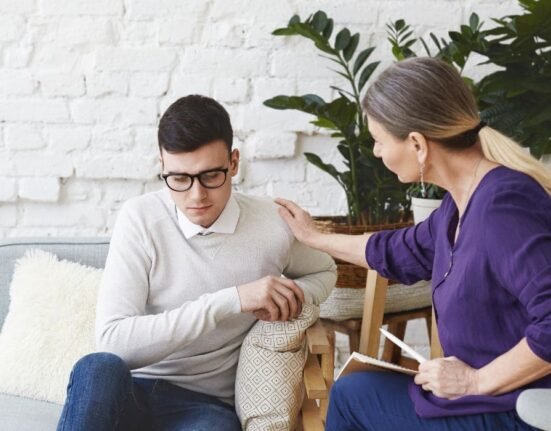Phobias are intense, persistent, and irrational fears of certain situations or objects. They can cause significant distress, interfering with an individual’s ability, and limiting their daily activities to function normally. They also have a significant impact on people’s mental health and well-being and affect their quality of life.
Additionally, it restricts a person’s capacity to engage in typical activities and daily responsibilities. Some common famous phobias which we can easily get to see in people around us are as follows:
- Agoraphobia: It is the fear of situations where escape is difficult, and help may not be available during panic attacks. Social anxiety stems from irrational fear of negative evaluation, leading individuals to worry about being judged or humiliated by others
- Social phobia: Social anxiety is an overwhelming fear of social situations and interactions. It can manifest in public speaking, meeting new people, or being in large groups. Social anxiety is driven by the fear of negative evaluation from others rather than logical concerns.
- Claustrophobia: An intense fear of small, closed spaces or situations that could lead to the feeling of being trapped or confined. People with phobia may experience physical symptoms such as sweating, trembling, short breaths, fast heartbeats or desire to escape the situation. The triggering situations may include elevators, airplanes, crowded places, tunnels and even MRI machines.
- Mysophobia: An extreme fear or aversion to germs or dirt. People with this phobia may engage in excessive hand washing or cleaning behaviours to avoid contamination. It is also regard as a type of obsessive compulsive disorder (OCD).
- Entomophobia: An intense fear of insects. People with this phobia when encountering insects, even if they pose no real threat, may experience significant anxiety and distress.
- Arachnophobia: An intense fear of spiders. People with this phobia when encountering spiders, even if they pose no real threat, may experience significant anxiety and distress.
- Cynophobia: An intense fear of dogs. People with this phobia when encountering dogs, even if they pose no real threat, may experience significant anxiety and distress.
Some of ways in which phobia have an impact on people’s mental health, well-being, and quality of life:
- Limiting daily activities: Phobias can limit daily activities in a number of ways, depending upon the nature and severity of phobia. Additionally, it restricts a person’s capacity to engage in typical activities and daily responsibilities.
- Severe anxiety: Phobias can cause severe anxiety, can lead to physical symptoms which include short breaths, rapid heartbeat, sweating trembling etc. These symptoms interfere with people’s daily activities, causing an individual to escape those situations that can trigger their phobia.
- Depression: People with phobias may also experience depression because of the impact phobia makes on their daily life which leads to isolation, avoidance, social exclusions, loneliness, helplessness and sadness.
- Stress: If an individual is exposed to the trigger of their phobia on a daily basis can contribute to their stress and can also show some physical health issues: headaches, muscle tension and digestive problems.
- Embarrassing and awkward moments: Phobia can cause embarrassing and awkward moments for people, as they can lead to avoidance or panic attacks in certain situations.
- Panic attacks: Phobia can cause panic attacks, for example, people may have a panic attack in a crowded public place or public transportation which leads to the feeling of embarrassment, helplessness or also feeling out of control.
- Substance abuse: Sometimes phobias can make people turn to drugs or alcohol to cope with anxiety and stress which can lead to substance abuse disorder and further can exacerbate their mental health and well-being issues.
In summary, phobias can be a debilitating situation in the life of people who experience them. Phobias may result from influences from a combination of genetic, environmental, and psychological variables, however their exact causes are unknown. Treatment options for phobias include therapy, medication, and self-help techniques like relaxation exercises, mindfulness meditation and exposure therapy. Exposure therapy involves gradually exposing to a feared situation. An individual builds up their tolerance and overcome their fear.
The most common treatment for phobias is Cognitive-behavioral-therapy (CBT). It involves gradually exposing the individual to the feared object, situation or place in a controlled environment. Helping them to develop coping capacity or mechanism and reduce their anxiety over time.
To treat phobias, doctors may also prescribe drugs including beta-blockers, tranquillizers, and antidepressants. Sometimes medications may involve some side effects. So it is important to seek professional help if phobia is interfering with daily life activities or causing significant distress. With proper treatment individuals can learn to manage their fears and improve their quality of life, mental health and well-being.













Leave feedback about this